Related Research Articles

Pope John XXII, born Jacques Duèze, was head of the Catholic Church from 7 August 1316 to his death, in December 1334. He was the second and longest-reigning Avignon Pope, elected by the Conclave of Cardinals, which was assembled in Lyon. Like his predecessor, Clement V, Pope John centralized power and income in the Papacy and lived a princely life in Avignon.
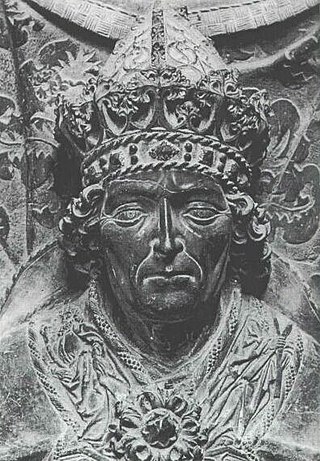
Louis IV, called the Bavarian, was King of the Romans from 1314, King of Italy from 1327, and Holy Roman Emperor from 1328 until his death in 1347.

Adam de Brome was an almoner to King Edward II and founder of Oriel College in Oxford, England. De Brome was probably the son of Thomas de Brome, taking his name from Brome near Eye in Suffolk; an inquisition held after the death of Edmund, 2nd Earl of Cornwall, in 1300, noted de Brome holding an inheritance of half a knight's fee.

Joseph Sadoc Alemany y Conill, O.P. was a Spanish Catholic clergyman, who served most of his career in California. He served as the first Bishop of Monterey (1850–53) and then as Archbishop of San Francisco (1853–84).

Nicholas Eymerich was a Roman Catholic theologian in Medieval Catalonia and Inquisitor General of the Inquisition in the Crown of Aragon in the later half of the 14th century. He is best known for authoring the Directorium Inquisitorum, that mostly summarized previous texts and mores.
Bérenger de Landore (1262–1330) was a French Dominican, who became Master of the Order of Preachers (1312–1317), and then Archbishop of Santiago de Compostela (1317-1330). He was from a noble family of southern France.
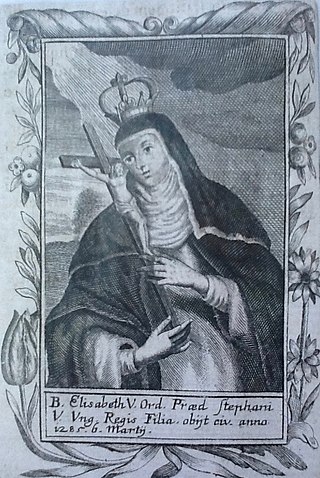
Elizabeth of Hungary, also known as Blessed Elizabeth the Widow, was a Hungarian princess member of the Árpád dynasty and Queen consort of Serbia. Since childhood, she was veiled as a nun, but she was married twice, and both times she was kidnapped by her husbands, Bohemian magnate Záviš of Falkenstein and King Stefan Uroš II Milutin of Serbia. Both husbands were in an unacceptable degree of kinship with Elizabeth from a canonical point of view: the marriage with Záviš of Falkenstein was not recognized by the Hungarian Church, and the marriage with Stefan Uroš II Milutin was not recognized by the Serbian Church. Nevertless, Elizabeth was venerated by the Hungarian Church as Blessed, while her scandalous marriage history is almost never mentioned in the later accounts of her life.

Henry of Treviso, also known as Henry of Bolzano or Blessed Rigo, was a lay pilgrim and holy man, a German from Bolzano (Bozen), who established himself in Treviso after the death of his wife and son. There he lived in extreme poverty, subsisting on alms, the excess of which he distributed among the poor.

Abu Sa'id Bahadur Khan, also spelled Abusaid Bahador Khan, Abu Sa'id Behauder, was the ninth ruler of the Ilkhanate, a division of the Mongol Empire that encompassed the present day countries of Iran, Azerbaijan, Georgia, and Armenia, as well as portions of Iraq, Turkey, Afghanistan, and Pakistan.
Demetrius Vicsadoli was a Hungarian clergyman in the first half of the 14th century, who was elected Archbishop of Kalocsa by the cathedral chapter in 1311, but Pope John XXII decreed that the election would be annulled and appointed Ladislaus Jánki instead.
John of Naples, also known as Giovanni Regina, was a Dominican friar and prominent Thomist theologian and philosopher in the early 14th century.
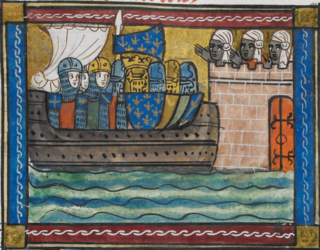
The Directorium ad faciendum passagium transmarinum is an anonymous 24,000-word Latin treatise on crusading submitted to King Philip VI of France on 26 July 1330 or 1332. The treatise proposes the conquest of the Holy Land, the Byzantine Empire and Russia and their subjection to the Catholic Church; outlines how this might be achieved; and describes how the conquered territories could be administered.
The chronology of the later Crusades through 1400 provides a detailed timeline of the Crusades from after the Eighth Crusade, the last of the major expeditions to the Holy Land through the end of the 14th century. This includes the events from 1270 on that led to the Fall of Outremer in 1291 and the Crusades after Acre, 1291–1399.
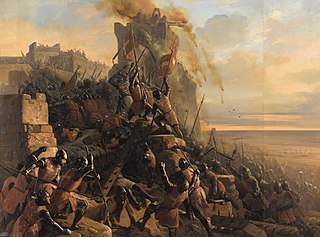
The Crusades after Acre, 1291–1399 represent the later Crusades that were called for by papal authorities in the century following the fall of Acre and subsequent loss of the Holy Land by the West in 1302. These include further plans and efforts for the recovery of the Holy Land, the later popular Crusades, Crusades against Christians, political Crusades, the latter parts of the Reconquista, and the Northern Crusades. Crusades were to continue well into the fifteenth century and would include those against the Ottoman Empire.

García Miguel de Ayerbe was an Aragonese nobleman and cleric who served as the bishop of León from April 1318 until his death. In the 1320s, he wrote a proposal for a new crusade to recover the Holy Land.
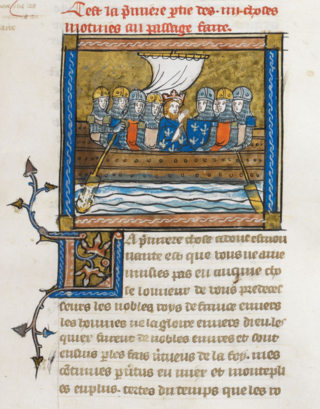
The theme of recovery of the Holy Land was a genre in High–Late Medieval Christian literature about the Crusades. It consisted of treatises and memoranda on how to recover the Holy Land for Christendom, first appearing in preparation for the Second Council of Lyon in 1274. They proliferated following the loss of Acre in 1291, shortly after which the permanent Crusader presence in the Holy Land came to an end, but mostly disappeared with the cancellation of Philip VI of France's planned crusade in 1336 and the start of the Hundred Years' War between England and France the next year. The high point of recovery proposals was the pontificate of Clement V.
References
- ↑ J. Richard (2011) “Adams, Guillame,” Encyclopædia Iranica, Vol. I, Fasc. 4, pp. 447-448.
- ↑ "Welcome to Encyclopaedia Iranica".
- ↑ Antony R. Leopold, How to Recover the Holy Land: The Crusade Proposals of the Late Thirteenth and Early Fourteenth Centuries (Ashgate, 2000), p. 39.